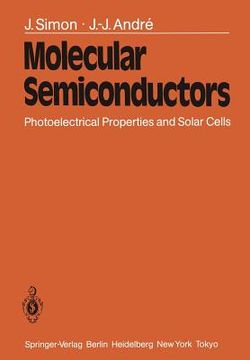Share
molecular semiconductors: photoelectrical properties and solar cells (in English)
J. Simon
(Author)
·
J. -J Andre
(Author)
·
Springer
· Paperback
molecular semiconductors: photoelectrical properties and solar cells (in English) - Simon, J. ; Lehn, J. M. ; Andre, J. -J
$ 52.09
$ 54.99
You save: $ 2.90
Choose the list to add your product or create one New List
✓ Product added successfully to the Wishlist.
Go to My WishlistsIt will be shipped from our warehouse between
Wednesday, May 29 and
Thursday, May 30.
You will receive it anywhere in United States between 1 and 3 business days after shipment.
Synopsis "molecular semiconductors: photoelectrical properties and solar cells (in English)"
During the past thirty years considerable efforts have been made to design the synthesis and the study of molecular semiconductors. Molecular semiconductors - and more generally molecular materials - involve interactions between individual subunits which can be separately synthesized. Organic and metallo-organic derivatives are the basis of most of the molecular materials. A survey of the literature on molecular semiconductors leaves one rather confused. It does seem to be very difficult to correlate the molecular structure of these semiconductors with their experimental electrical properties. For inorganic materials a simple definition delimits a fairly homogeneous family. If an inorganic material has a conductivity intermediate between that of an 12 1 1 3 1 1 insulator 10- n- cm- ) and that of a metal (> 10 n- cm- ), then it is a semiconductor and will exhibit the characteristic properties of this family, such as junction formation, photoconductivity, and the photovoltaic effect. For molecular compounds, such simplicity is certainly not the case. A huge number of molecular and macromolecular systems have been described which possess an intermediate conductivity. However, the various attempts which have been made to rationalize their properties have, more often than not, failed. Even very basic electrical properties such as the mechanism of the charge carrier formation or the nature and the density ofthe dopants are not known in detail. The study of molecular semiconductor junctions is very probably the most powerful approach to shed light on these problems.
- 0% (0)
- 0% (0)
- 0% (0)
- 0% (0)
- 0% (0)
All books in our catalog are Original.
The book is written in English.
The binding of this edition is Paperback.
✓ Producto agregado correctamente al carro, Ir a Pagar.

